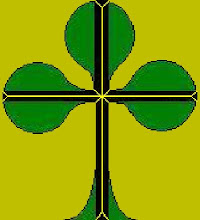This concept becomes the most poignant in the poems. I have always had trouble reading the Psalms because they don't feel like poetry to me. I see that as a failure of the translation: poems should feel like poems. Simply changing the indentation isn't enough for me.
- Some things are simple: throw in some rhyme to group sections together that are clearly grouped in the Hebrew
- If there is alliteration, use alliteration (even if it is not precisely in the same place, or if it isn't the "best english word" to mean what the Hebrew meant)
- If there is a pun, establish at least some kind of word connection (puns are untranslatable, but there are other ways to connect two words)
Now what I have given some more thought to is the Hebrew acrostic poem. The alphabetical acrostic is an incredibly common poetic form in Hebrew. However, translating that structure into English is quite difficult. Here are some of my thoughts:
- A different structure that serves a similar purpose
- Though I know some rhythmic and rhyming structures that can stretch across a poem, I don't know any that can bring the kind of stylized unity as an acrostic
- Using the English Alphabet
- The Hebrew alphabet has 22 letter. English as 26. I don't think it's right to just add or split lines to make the acrostic work (especially if you try to do Psalm 119 that way)
- Not all English letters are easy to use in acrostics, like 'j', 'z', or 'x' (though 'x' you could solve by use the 'ex' prefix, but there are still other leters)
- Though it would seem the first and second problem could solve itself (take out 4 problem letters), in order to make an quasi-alphabetical acrostic like that work, you would need to have the most important letter groups, especially the two most important: abc and xyz. Out of all the letters to remove, 'z' is the most important since there are less usable words starting with 'z' than any other letter.
- Using the Transliterated Hebrew Alphabet
- You still have 'z' to contend with (The Hebrew letter zayin)
- There are some Hebrew letters that don't have English equivalents. This isn't that bad though since the letters alef and ayin can use two vowels to represent them (I would recommend 'a' and 'e'), the letter chet is usually represented as a 'ch' anyway, and that really only leaves the letter tsade (it makes a "ts" sound).
- You have recurring sounds in letters. Again this isn't too bad. You can use 'sh' instead of sin, 'th' instead of tav, and kaph and qoph have 'k' and 'q' (or 'k' and 'c' if you want to be nice to yourself).
- The Hebrew Alphabet isn't known to the English public, so it won't really serve the same funtion. If this is the case, we would essentially have to rely on people learning "Hebrews used acrostics" or simply noticing that so many poems use this same letter order (Psalm 119 will help in that observation).
Now you may say that this is pointless, but I think it is important to at least try and see whether or not it works.
Any thoughts.



No comments:
Post a Comment